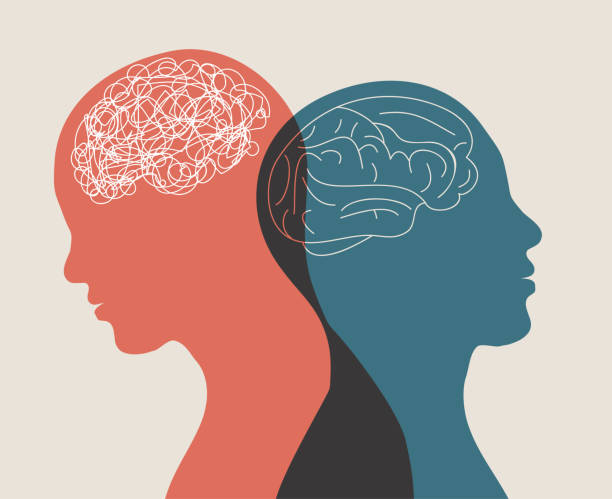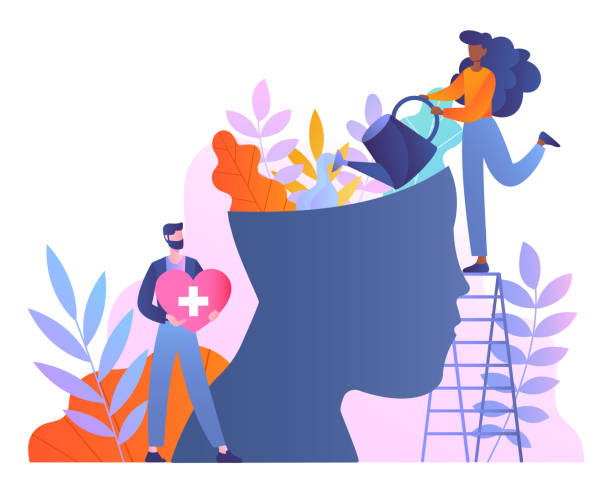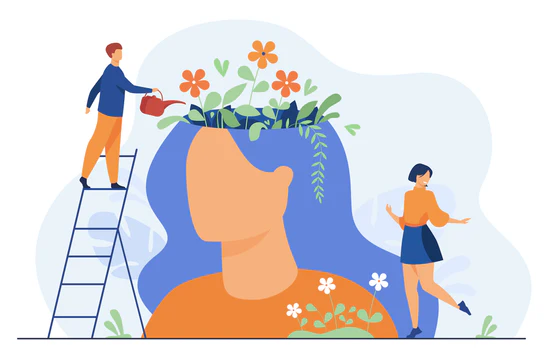Every 40 seconds, somewhere in the world, a person dies by suicide (World Health Organization (WHO), 2021). This translates to over 700,000 deaths annually, leaving millions of families and communities shattered. India carries a particularly heavy burden: in 2022, the country recorded more than 170,000 suicides—the highest number ever reported (National Crime Records Bureau (NCRB), 2022). Suicide is now among the leading causes of death among young people in India, making Suicide Prevention Awareness Month not only relevant but urgent.
Read More: Emotions SOS
Why Suicide Prevention Month Matters
Observed globally each September, Suicide Prevention Awareness Month provides an opportunity to highlight the reality of suicide, educate communities, and promote hope. The month includes key observances such as World Suicide Prevention Day on September 10, initiated by the International Association for Suicide Prevention (IASP) and supported by the WHO.
Read More: What is Suicide?
In India, where suicide rates are among the highest in the world, the significance of this month cannot be overstated. Despite being a preventable cause of death, suicide is often shrouded in silence, stigma, and misunderstanding. Suicide Prevention Month is a call to break that silence—encouraging people to speak openly about mental health, recognize warning signs, and spread knowledge about resources that can save lives.
The Scale of the Problem
Globally, suicide is the third leading cause of death among 15- to 29-year-olds (WHO, 2021). In India, the crisis is especially stark. According to NCRB data (2022), India reported 171,000 suicides in 2022, with a suicide rate of 12.4 per 100,000 population. This represents a 27% increase since 2018. Young people and women are disproportionately affected: nearly 35% of suicides in India occur in the 15–24 age group (Patel et al., 2012).
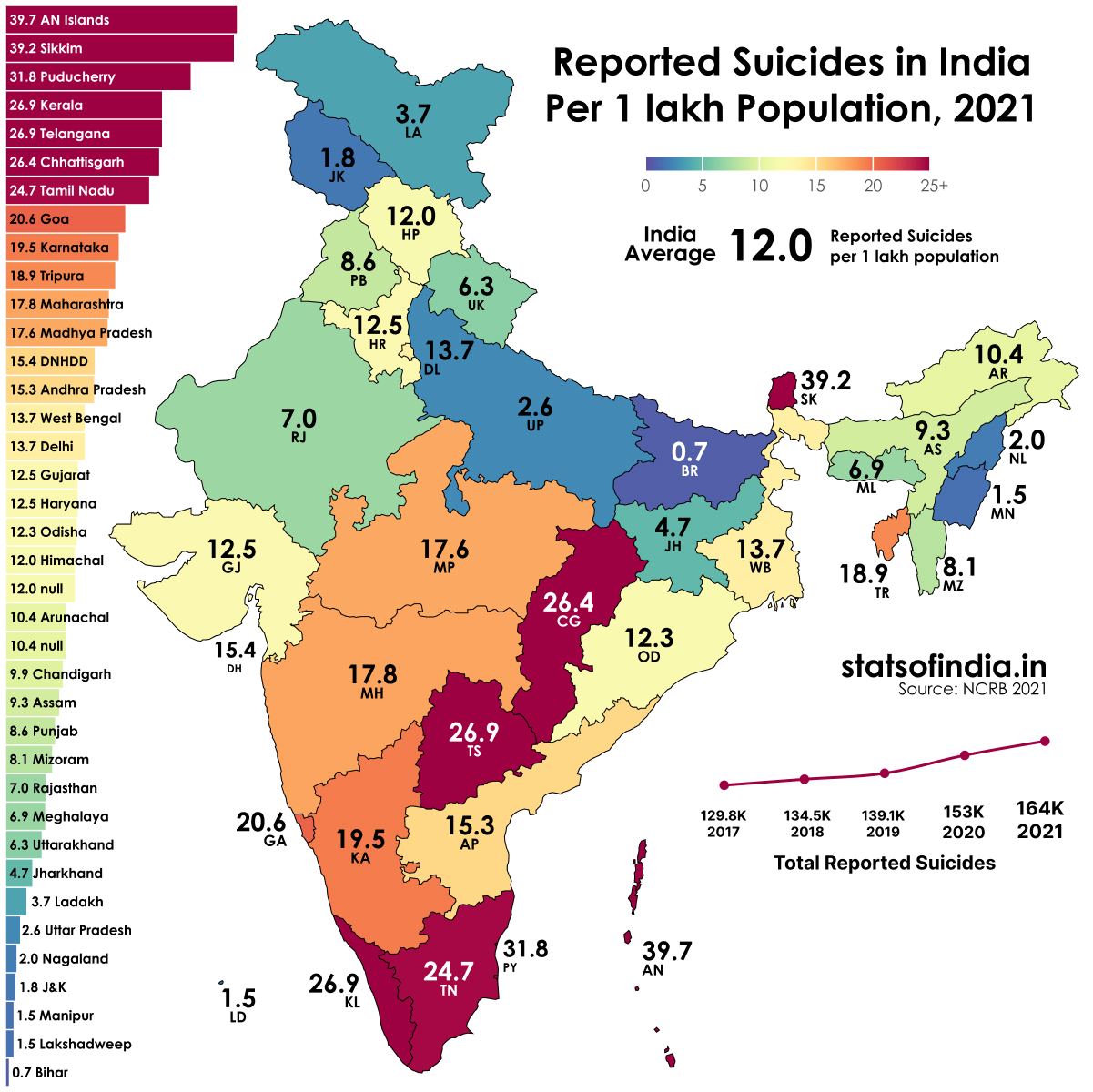
Among Indian youth, suicide rates are significantly higher than the global average. Research has shown that young women in India die by suicide at rates of up to 80 per 100,000, compared to a global average of about 10 per 100,000 (Patel et al., 2012). Contributing factors include academic stress, unemployment, relationship difficulties, and social pressures.
Legal and Policy Shifts
For decades, suicide was criminalized under Section 309 of the Indian Penal Code. However, the Mental Healthcare Act, 2017 decriminalized suicide attempts and emphasized the responsibility of the state to provide care and support (Government of India, 2017). This was a landmark step toward reducing stigma and improving access to mental health services.
The Government of India also launched the KIRAN helpline (1800-599-0019) in 2021, a 24×7 toll-free line offering support in 13 languages (Ministry of Social Justice and Empowerment, 2021). These efforts mark progress, but gaps remain in infrastructure, awareness, and accessibility—particularly in rural areas.
Resources
Suicide is often misunderstood as an individual tragedy, but it is deeply connected to social, economic, and cultural contexts. To make prevention real and actionable, people need to know where they or their loved ones can turn for help.
National Suicide Prevention Helplines and Resources
Some of the national helplines and resources are:
- KIRAN 1800-599-0019 Toll free (24*7) by Government of India
-
AASRA (Mumbai, Navi Mumbai)
-
Focus: Suicide prevention and crisis intervention.
-
Helpline: +91-22-27546669 (24×7)
-
-
Snehi (New Delhi)
-
Focus: Emotional support, counselling, and crisis intervention.
-
Helpline: +91-9582208181 (Daily, 24×7)
-
-
Sumaitri (New Delhi)
-
Focus: Befriending services for people feeling distressed or suicidal.
-
Helpline: +91-11-23389090 (Mon–Fri 2 pm–10 pm; Sat–Sun 10 am–10 pm)
-
-
Sneha (Chennai, Tamil Nadu)
-
Focus: Suicide prevention, emotional support.
-
Helpline: +91-44-24640050 (24×7)
-
-
Vandrevala Foundation (National Reach)
-
Focus: Mental health services, tele-counselling, psychiatric care.
-
Helpline: 1860 2662 345 / +91-9999 666 555 (24×7)
-
-
iCALL – TISS (Mumbai, National Service)
-
Focus: Telephone and email counselling by trained professionals.
-
Helpline: +91-9152987821 (Mon–Sat, 10 am–8 pm)
-
-
COOJ Mental Health Foundation (Goa)
-
Focus: Suicide prevention, counselling, rehabilitation.
-
Helpline: +91-832-2252525 (Weekdays, 3 pm–7 pm)
-
-
Saath (Ahmedabad, Gujarat)
-
Focus: Crisis intervention and emotional support.
-
Helpline: +91-79-26305544 / +91-79-26300222 (Daily, 1 pm–7 pm)
-
-
Roshni Trust (Hyderabad, Telangana)
-
Focus: Suicide prevention, counselling services.
-
Helpline: +91-40-66202000, +91-40-66202001 (Mon–Sat, 11 am–9 pm)
-
-
Connecting NGO (Pune, Maharashtra)
-
Focus: Suicide prevention and mental health awareness.
-
Helpline: +91-9922001122 / 1800-843-4353 (Daily, 12 pm–8 pm)
-
These services are lifelines for people who may not otherwise have access to professional mental health support. They represent a crucial safety net in a country where mental health services are unevenly distributed.
Suicide Warning Signs and Community Role
Friends, families, and communities can play a key role in prevention by recognizing early warning signs. These may include talking about death, withdrawal from social activities, dramatic mood changes, hopelessness, or giving away possessions (American Psychiatric Association, 2013). Learning to notice and respond compassionately can open the door for someone to seek help.
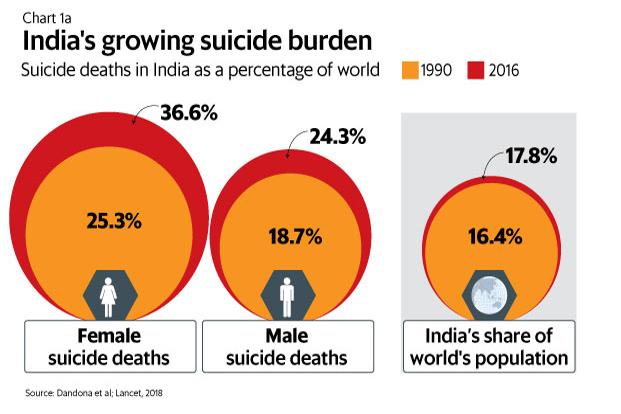
Communities—schools, colleges, workplaces, and religious groups—can create supportive environments by normalizing mental health conversations, offering peer support programs, and making resource information visible.
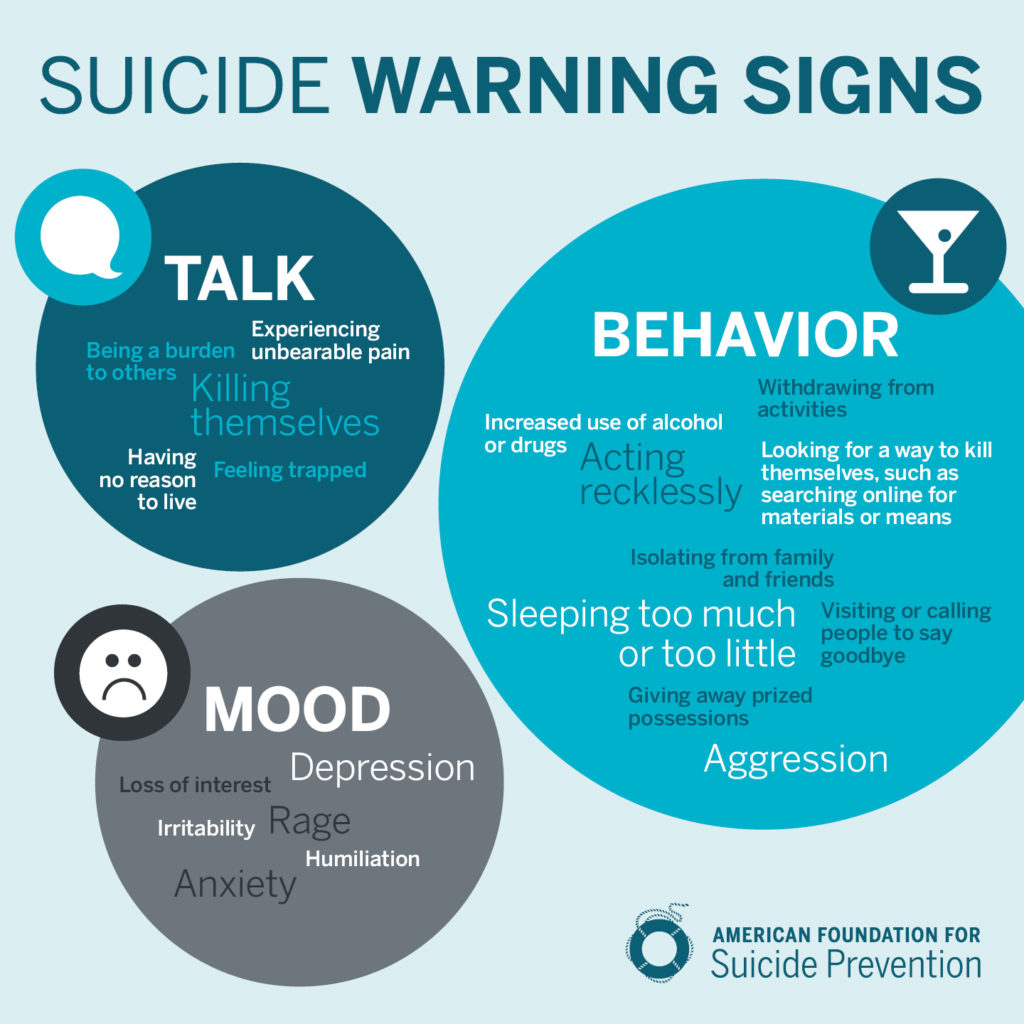
What Can Be Done
Some of the things that can be done are:
- Save and Share Helpline Numbers: Awareness of resources like KIRAN or AASRA can make the difference between isolation and hope.
- Encourage Conversations: Talking about suicide does not increase risk; instead, it reduces stigma and makes people feel less alone.
- Promote Mental Health in Institutions: Schools and workplaces should integrate awareness campaigns, workshops, and wellness programs.
- Advocate for Policy Change: Strengthening the implementation of the Mental Healthcare Act, increasing funding for mental health, and improving rural outreach are essential steps.
- Volunteer and Support NGOs: Many organizations providing crisis counseling rely on volunteers and donations. Supporting them extends their reach.
What is the Right Behavior?
Every word, gesture, and behavior matters. It is important for all of us to psychoeducate ourselves in terms of how to respond to suicide, self-harm, or suicidal behavior/tendencies. Here is a brief guide.
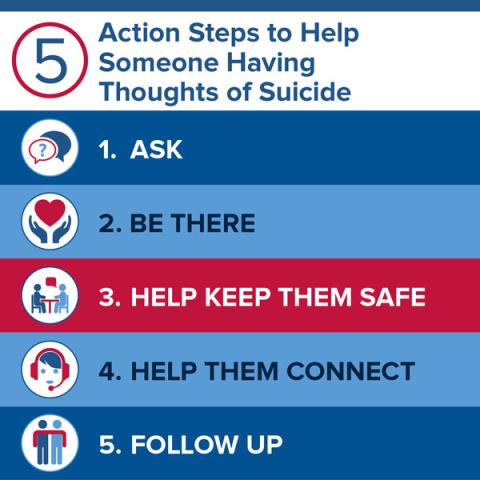
Supporting Friends and Family in Crisis
If someone you care about expresses suicidal thoughts, the instinct may be to panic or avoid the topic. However, research shows that talking openly and non-judgmentally about suicide does not encourage it—it can actually reduce risk (American Psychiatric Association, 2013).
Here are steps family members and friends can take:
- Listen without judgment: Let them talk. Avoid dismissing their feelings with phrases like “don’t be silly” or “others have it worse.” Instead, validate their pain.
- Ask directly but gently: It is okay to ask, “Are you thinking about suicide?” This shows you care and are not afraid to have the conversation.
- Ensure safety: If they have immediate plans or means to harm themselves, do not leave them alone. Remove dangerous items (like medications, sharp objects, or firearms if present).
- Encourage professional help: Suggest reaching out to a helpline such as KIRAN (1800-599-0019) or AASRA, or encourage them to see a mental health professional. Offer to accompany them if possible.
- Stay connected: Regular follow-up, whether through calls, visits, or messages, reassures them that they are not alone.
- Take care of yourself too: Supporting someone in crisis is emotionally demanding. Caregivers may also need peer or professional support.
By showing presence, compassion, and persistence, families and friends can provide an essential safety net until professional help is in place.
Guidance for Authority Figures
Suicide prevention is not the sole responsibility of health professionals—teachers, police officers, employers, and community leaders often encounter individuals in distress. Their response can mean the difference between escalation and recovery.
Teachers and Educational Institutions
- Recognize signs: Falling grades, absenteeism, withdrawal, or expressions of hopelessness should not be ignored.
- Create safe spaces: Schools and colleges should normalize conversations about mental health, include peer-support clubs, and publicize helpline numbers.
- Immediate response: If a student expresses suicidal thoughts, listen, inform school counselors or designated mental health professionals, and involve parents sensitively.
- Avoid punishment: Academic failure or disciplinary issues should never be framed in ways that humiliate or isolate students, as shame can intensify risk.
Police and Law Enforcement
- Approach with empathy: When responding to suicide attempts or crises, officers should prioritize care over criminalization. The Mental Healthcare Act (2017) requires that individuals who attempt suicide receive treatment, not punishment (Government of India, 2017).
- Training matters: Police should receive training in crisis intervention, de-escalation techniques, and referral pathways to mental health services.
- Collaboration with NGOs: Police can work with helplines and community organizations to connect at-risk individuals with professional support.
Employers and Workplaces
- Promote mental health: Workplaces should establish Employee Assistance Programs (EAPs), offer stress-management workshops, and reduce stigma by encouraging leaders to talk openly about mental health.
- Know when to act: If an employee expresses suicidal thoughts, employers should connect them with professional help, adjust workloads, and ensure they have social support.
- Crisis protocols: Every workplace should have a clear protocol for handling suicidal crises, including emergency contacts and referral services.
Community and Religious Leaders
- Be accessible: Many people, especially in rural India, turn to community or faith leaders before approaching professionals. Leaders should be trained to listen, avoid judgmental advice, and refer individuals to helplines or clinics.
- Promote awareness: Religious sermons, festivals, or community events can be platforms for sharing suicide prevention messages and resources.
Suicide is preventable. With education, resources, and compassion, lives can be saved. As India observes Suicide Prevention Month, each of us has a role to play—whether by listening without judgment, sharing helpline numbers, or advocating for systemic change.
September may end, but the responsibility does not. Suicide Prevention Month should spark a year-round commitment to empathy, awareness, and action. One conversation, one connection, or one shared resource may be enough to save a life.
Statewise Suicide Helplines
Here is a collated list of statewise suicide helplines. Help is always around the corner, just extend one hand!
STATEWISE SUICIDE HELPLINES
References
American Psychiatric Association. (2013). Diagnostic and statistical manual of mental disorders (5th ed.). Washington, DC: Author.
Government of India. (2017). The Mental Healthcare Act, 2017. New Delhi: Ministry of Law and Justice.
Ministry of Social Justice and Empowerment. (2021). Press release: Launch of KIRAN mental health rehabilitation helpline. New Delhi: Government of India.
National Crime Records Bureau. (2022). Accidental deaths and suicides in India 2022. New Delhi: Ministry of Home Affairs.
Patel, V., Ramasundarahettige, C., Vijayakumar, L., Thakur, J. S., Gajalakshmi, V., Gururaj, G., … & Jha, P. (2012). Suicide mortality in India: A nationally representative survey. The Lancet, 379(9834), 2343–2351. https://doi.org/10.1016/S0140-6736(12)60606-0
World Health Organization. (2021). Suicide worldwide in 2019: Global health estimates. Geneva: WHO.
Subscribe to PsychUniverse
Get the latest updates and insights.
Join 3,030 other subscribers!
Niwlikar, B. A. (2025, September 7). Suicide Prevention Awareness Month 2025: One Conversation Can Make a Difference. PsychUniverse. https://psychuniverse.com/suicide-prevention-awareness-month-2025/

